In Aotearoa, the town with the most amount of freshwater bodies is Rotorua, with 18 lakes.
It is a taonga that those who live there take pride in. Since 2015, Rotorua Lakes Council has been working on plans to protect the health of Lake Tarawera and its surrounding community by replacing septic tanks with a modern wastewater reticulation system.
This 23km of pipeline was built to connect around 440 Lake Tarawera properties to the public wastewater network
“This is a very special lake, not only to me and my family but also to our Rotorua community. So this pipeline is actually fixing that, making sure that when people flush the toilet, it goes through a safe pipeline to a wastewater treatment plant,” said Tania Tapsell, the Rotorua Mayor.
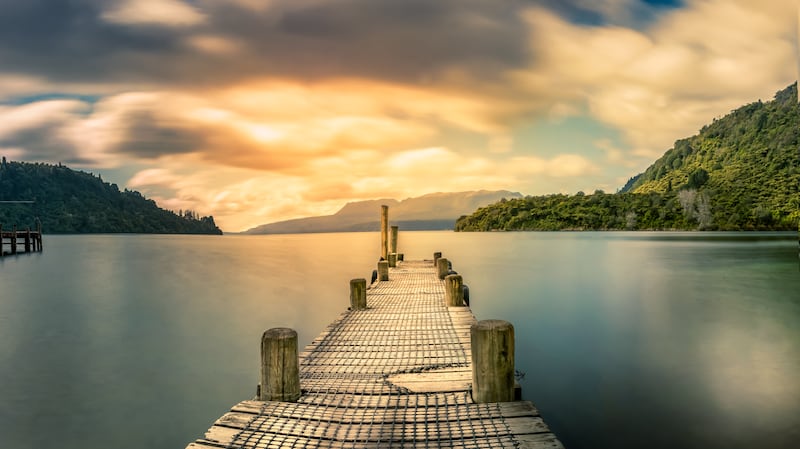
Stage one of the project has already been completed.
The main goal of the Tarawera Sewerage Scheme is to protect the lake’s water quality - a goal shared by local iwi and hapū. As freshwater people, Te Arawa have long been sustained by and connected to these lakes.
But the council has faced backlash from the mana whenua of Lake Rotokākahi over the location of a section of the pipeline.
“It’s not that we were against it, we were never against the Tarawera reticulated sewage system. We were just saying not right here, not under our awa, not under our river, and literally right next to our lake,” Protect Rotokākahi Māngai, Te Whatanui Leka Skipwith said.
“The environmental endangerment issue is just far too great, and then who’s responsible for the clean-up? It’ll be our people, it’ll be us, it’ll be my kids, it’ll be their kids.
“[The] environmental damage of human waste, a clean-up of that wouldn’t happen over a few months, it’ll happen over years, and so we just wanted to ensure that didn’t happen.”
The pipeline was built near Lake Rotokākahi, a privately owned lake considered wāhi tapu by mana whenua, with tūpuna buried nearby during the 1886 Mt Tarawera eruption.
Swimming, fishing, and boating are prohibited in the lake.
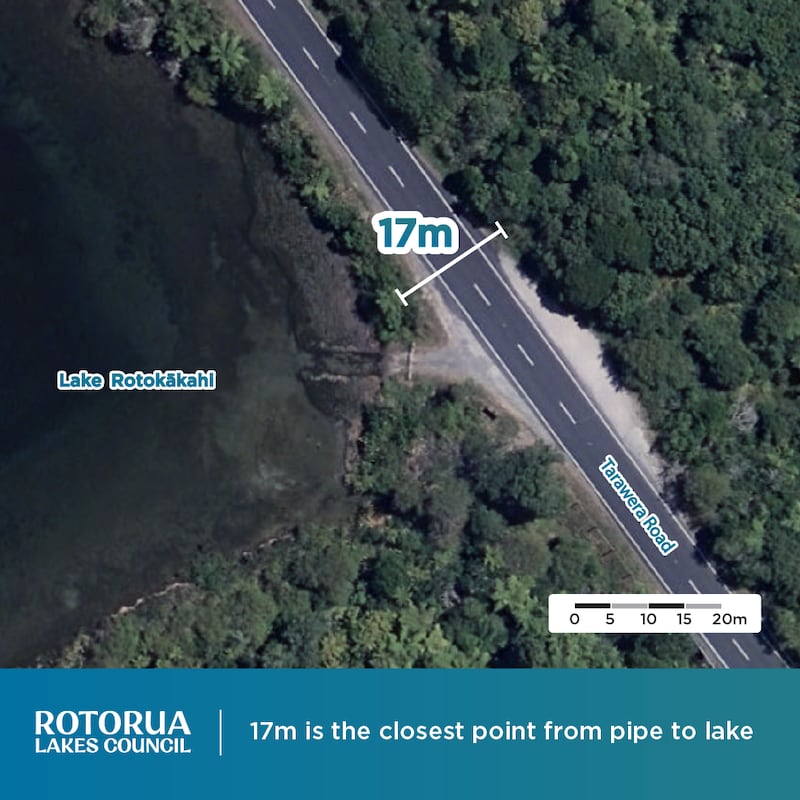
The closest the new sewage system comes to the sacred lake is 17 metres - on the other side of Tarawera Road - but it does run beneath Te Wairoa Stream, which flows out of Lake Rotokākahi.
Tapsell stated the pipe built under the stream was placed 2 metres underneath and was double sleeved.
“It’s actually like a really fancy plastic one. It was what survived the Christchurch earthquakes, and it is what we have in many other lake areas around Rotorua as well.”
Rotorua Lakes Council says it consulted mana whenua early in the process through its Lake Tarawera Sewerage Scheme Steering Committee, which included representatives from Tūhourangi Tribal Authority, Te Mana o Ngāti Rangitihi, Māori landowners, the Lake Tarawera Ratepayers Association, Te Arawa Lakes Trust, Bay of Plenty Regional Council, and the council itself.
Skipwith claims they didn’t.
“It’s like saying they’ve gotten the decision based on your neighbour, to decide what happens in your house, it’s very different.
“That’s initially what they’re trying to utilise for the discussion, saying that they’ve had a discussion with our whānau, which was incorrect, and our iwi weren’t actually involved in the discussion until around about 2023.”
Before the pipe was laid down near Lake Rotokākahi, the council had a direct conversation with the Rotokākahi Board of Control (RBOC) - a board made up of people from Tūhourangi and Ngāti Tumatawera.
Legal woes
During the laying of the pipeline, many gathered at Lake Rotokākahi to protest work being carried out near a sacred site.
This led to a halt in construction when the council sought an injunction in May 2024 to stop protesters from blocking access to the site following demonstrations in January. A District Court judge adjourned the case without a ruling but allowed the council to revisit it at any time.
The council did so in November that same year, citing two alleged incidents in August - one of which involved a contractor who claimed to have overheard a protester say he “felt like grabbing his shotgun and blasting them,” according to Local Democracy Reporting.
Those weren’t the only threats shared during stage one of the project.
The Rotorua Mayor told Te Ao Māori News she received multiple threats over the controversial project.
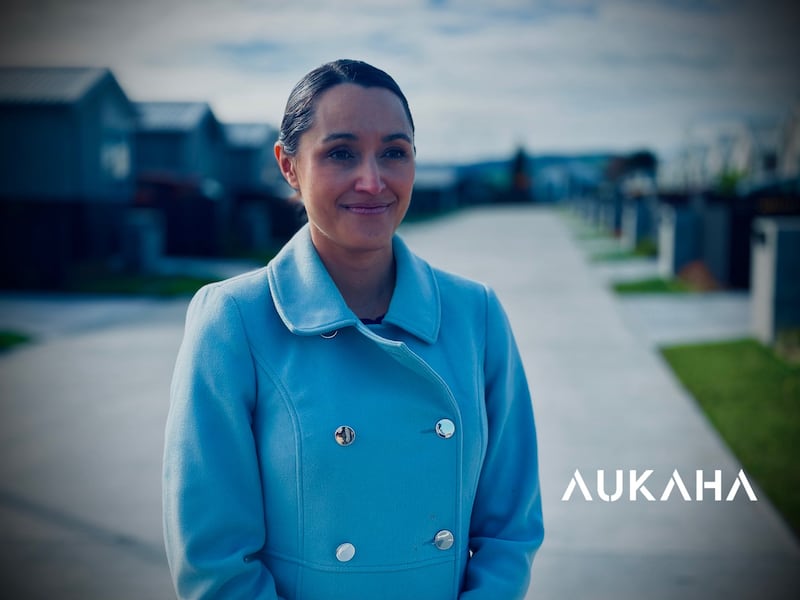
“This has been incredibly challenging. Never did I think that I would feel unsafe in my own workplace, in my own home, but due to the nature of misinformation that was shared on social media. I did receive a number of threats of violence, 23, which were bad enough to have to involve police involvement.”
She said part of the misinformation being shared on social media was that the council was digging and drilling through wāhi tapu and pumping raw sewage into the sacred lake.
“But we do know and appreciate the concerns that people had.
“We made sure that when concerns were raised, especially from the protesters, that we actually paused the project and we allowed additional time to be able to show them and explain to them and also take on board their concerns and actually put in what we call any mitigation.
“Look, some people still won’t be happy about this, but I want to reinstate that we were not drilling through any wāhi tapu. The pipeline was completed without finding or disturbing any burial sites in particular. So, I know that was actually the key concern that was arising from the process,” said Tapsell.
Skipwith said the council didn’t listen to iwi and hapu concerns.
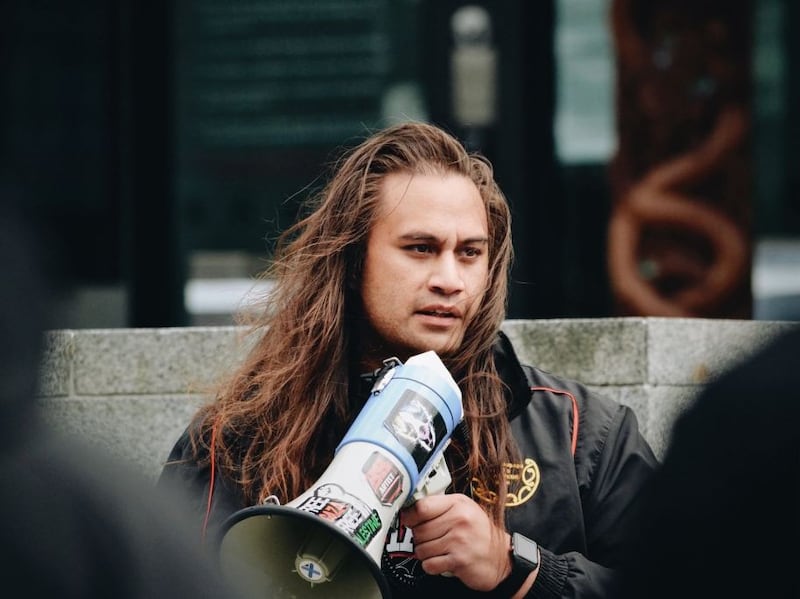
“Even after the Council had come to our hui ā-iwi and had listened to a collective vote of a no, they still continued on with the same decision anyway.
“So that was the reason for the noho whenua and why we are still continuing to fight against the poor decisions that are made and bad planning by those who are in those positions now,” he said.
The second injunction was granted and barred anyone from entering or remaining in the Tarawera Road work zone without council permission - except through-traffic and those authorised by the Board of Control to access the boat ramp. It also prohibited any obstruction or interference with personnel, vehicles, or council‑authorised machinery.
Work would continue until February 2025, when RBOC and Protect Rotokākahi Inc. filed Environment Court proceedings, arguing the council needed resource consent. They sought an enforcement order to prevent harm to wāhi tapu and burial sites.
Construction remained paused while the Environment Court considered the applications. It later dismissed them, noting the council had explored alternatives since 2018 and made significant efforts from 2020 to 2023 to engage with iwi and mana whenua, including offering mitigations.
What now?
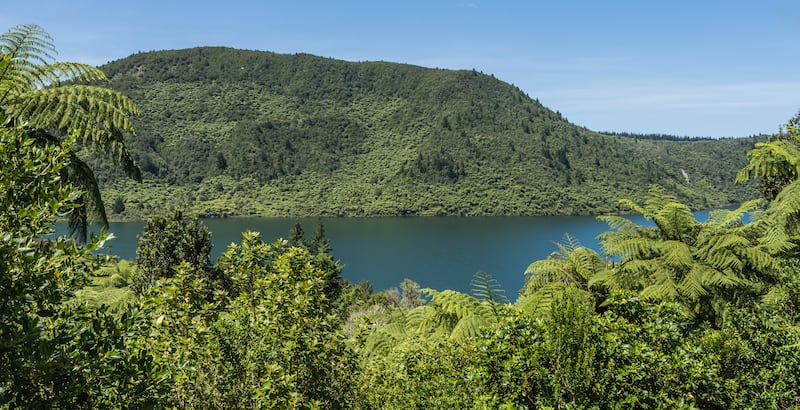
Skipwith, an advisory member to the RBOC, said they plan to take the council to the High Court, as the Environment Court judge ruled that much of what they sought was outside its jurisdiction and could only be granted by the High Court.
“Basically we’ve filed through the High Court and we’re waiting. We’re just awaiting for our day in court in the High Court. Nothing’s been confirmed yet,” he told Te Ao Māori News.
While their day in court comes, the council is moving towards stage two of the Tarawera Sewage Scheme.
“Stage 2 is now connecting the private properties to the public pipeline that runs along the road all the way to our wastewater treatment plant here in Rotorua city,” Tapsell said.
As things continue to unfold, Local Government Elections are approaching, with a few reruns and new faces eyeing seats at the table.
Tania Tapsell is seeking re-election as Rotorua Mayor, while Te Whatanui Leka Skipwith is running for a seat under the Māori Ward.
“I’m actually chomping at the bit to be honest, to be running for the Māori seat in Rotorua Lakes Council on Local body elections. I’m not avoiding any of it, and I actually want all the smoke that comes with running for local ward for the Māori seat there, to represent us, to ensure that bad decision making and poor planning never happens again,” said Skipwith.
He said he would run for the Māori seat this time and then in the next elections go for a general seat.
Voting will be open for the Rotorua Local election between September 9 to October 11.



